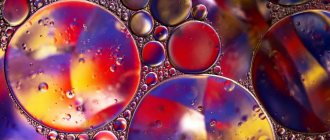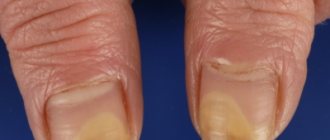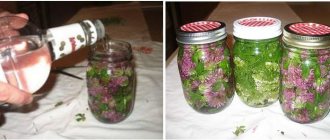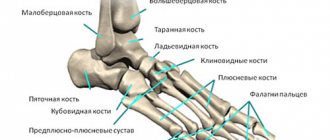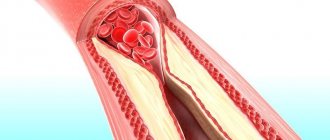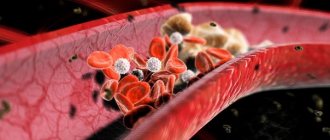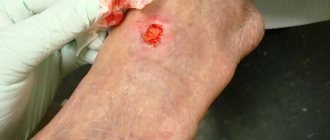At the end of the 20th and beginning of the 21st centuries, diseases of the cardiovascular system acquired the nature of a pandemic, being the main cause of disability and death in the population of economically developed countries. The main role in circulatory disorders in arterial vessels belongs to atherosclerosis.
Atherosclerosis is a chronic disease of the arteries that occurs as a result of lipid metabolism disorders and is accompanied by the deposition of cholesterol and its “bad” fractions in the vessel wall. Deposits form atherosclerotic (cholesterol) plaques on the walls of blood vessels. The subsequent growth of connective tissue in them (sclerosis), and calcification (calcium deposition) of the vessel wall lead to deformation and narrowing of the lumen until complete blockage.
When the arteries supplying the heart are damaged, a phenomenon called angina pectoris (chest pain) occurs and, as a result, acute myocardial infarction may develop.
Damage to the arteries supplying the brain causes either a transient (micro-stroke) or persistent (stroke) disturbance of cerebral circulation. Deposition of cholesterol in the arteries of the extremities is the cause of the development of lameness, pain in the calf during exercise, and gangrene of the extremity. Atherosclerosis of the abdominal arteries leads to intestinal ischemia and gangrene. Possible narrowing of the renal arteries due to the accumulation of cholesterol leads to a pronounced increase in blood pressure.
Risk factors for the development of atherosclerosis
- hypertension (systolic blood pressure >140 mm Hg, diastolic blood pressure >90 mm Hg),
- alcohol abuse,
- smoking (the most dangerous factor),
- sedentary lifestyle,
- unhealthy diet
- hereditary predisposition,
- obesity,
- increased cholesterol in the blood (total cholesterol >5 mmol/l, “bad” cholesterol >3 mmol/l, a-cholesterol >50 mg/dl,
- diabetes,
- emotional overstrain.
Such a high probability of atherosclerosis requires timely provision of therapeutic and preventive assistance, because it is known that a person’s age is determined by the state of his vascular bed. In the popular scientific literature devoted to the problem of atherosclerosis, the expression “ cleansing of blood vessels ” is used. Although not a medical term, “ vascular cleansing ” defines a number of extremely relevant measures for the prevention and treatment of atherosclerosis:
- healthy lifestyle and prevention of atherosclerotic process in blood vessels,
- stabilization of the course of atherosclerosis in the presence of its clinical manifestations through pharmacological agents,
- surgical restoration of vascular patency in cases of severe manifestations of atherosclerosis.
Myths about “cleansing” blood vessels
The term “cleaning” is popularly understood to mean the following processes:
- reduction or complete “destruction” of cholesterol plaques, dissolution of blood clots;
- strengthening blood vessels and increasing the resistance of the intima (inner layer of the vessel) to any damage;
- improving the functioning of the smooth muscles of the vascular wall.
“Doctors” have developed a lot of different remedies that supposedly should not only prevent the appearance of new atherosclerotic plaques, but also completely remove existing ones, bringing the cardiovascular system to its original (“healthy”) state.
There are 2 main myths circulating among people that are associated with cleaning blood vessels:
- Herbal remedies can reduce the area of atherosclerotic damage to the vascular bed if taken on an ongoing basis.
- Once every six months (or a year) you should go to the hospital or visit a day hospital, where a course of treatment is carried out (intravenous administration of Mexidol, Cavinton, Actovegin and other agents that improve microcirculation and regulate the permeability of the vascular wall). It is believed that this option completely cleanses the bloodstream.
However, the reality is harsh! The body's vast network of blood vessels, which deliver oxygen and nutrients to all cells, is not a water pipe. Blockages or build-ups on interior wall surfaces cannot be removed in the same way that Fairy or Mole removes grease blockages. Any atherosclerotic lesion is irreversible and will never disappear (with the exception of surgical therapy).
Atherosclerosis is a serious pathology that is often hereditary. If there is a disorder in the metabolism of lipoproteins in the body (dyslipidemia), “atherogenic” substances begin to be actively deposited in the walls of blood vessels and it is no longer possible to remove them from there! The more a person makes mistakes in diet and lifestyle, the less he monitors basic health indicators, the more the circulatory system suffers.
The outcome is always the same - a serious cardiovascular complication (ischemic or hemorrhagic stroke, coronary heart disease and myocardial infarction, chronic kidney disease).
Therefore, if we give any meaning to the term “cleaning of blood vessels,” it should include the following criteria:
- normalization of lipid profile;
- glucose control;
- systematic observation by a doctor in the presence of atherosclerosis (in order to timely identify significant obstruction of any vessel and prescribe surgical treatment).
Considering that atherosclerosis is an integral part of the metabolic syndrome, body weight should be brought to normal levels and hypertension should be treated. The set of problems described above (or several of them) is typical for almost every person over 40 years old.
Diet for vascular atherosclerosis
First of all, it is supposed to reduce the consumption of fats (containing cholesterol) to such a level that they account for less than 30% of daily calories. In this case, the proportion of saturated fats should not exceed 10%. It is recommended that cholesterol intake be no more than 300 mg per day.
The next requirement for the diet is calorie restriction. In this case, the total caloric intake should not exceed 2500 calories per day. However, we must not forget about the variety and nutritional value of food. It is known, for example, that a deficiency of protein in food reduces resistance to stress, a lack of fatty acids contained in vegetable oils impairs brain function, etc.
Animal products
The consumption of saturated fat, or more simply cholesterol, can be reduced by reducing the amount of beef, pork and lamb. It is recommended to consume any meat products boiled.
It is necessary to remove the skin from the bird and avoid eating the internal organs of animals.
Fatty fish, such as halibut, contain a completely different type of fat that helps dissolve cholesterol plaques in arteries affected by atherosclerosis. Experts from Duke University believe that even one fish meal a week may be enough to reduce the risk of an unexpected heart attack by 50%. Interestingly, you can take fish oil instead of fish, which contains omega-3 fatty acids and lowers cholesterol.
Also, the diet should satisfy the body's needs for vitamin B6. It is actively involved in the processes of fat metabolism, in the transport and breakdown of cholesterol, and in organic iodine, which increases the synthesis of thyroid hormones. Thus, it stimulates the processing of dangerous cholesterol.
For this purpose, it is recommended to include seafood in the diet:
- seaweed dishes,
- squid,
- scallop,
- mussels, etc.
These are the products that lower cholesterol and “clean” blood vessels .
Products of plant origin
Vegetable oil contains “healthy” polyunsaturated fats. Olive oil is considered the most beneficial among vegetable fats. Try to replace them with other types of fats that contain bad cholesterol. Preference should be given to unrefined, cold-pressed olive oil. Because it contains a record amount of antioxidants that are beneficial for the heart and blood vessels, preventing the development of atherosclerosis. This oil is also involved in cleaning blood vessels from cholesterol.
But you can’t get carried away with vegetable oils either! This is often forgotten in recommendations. The fact is that an excess of polyunsaturated fatty acids can lead to a decrease in good cholesterol, which has an anti-sclerotic effect.
Cholesterol intake can be reduced by reducing the consumption of egg yolks (4 yolks per week) and organ meats:
- brain,
- kidneys,
- liver.
55-60% of daily calories should be provided by complex carbohydrates:
- vegetables,
- whole grain products,
- fresh fruits.
An important point is the inclusion of wholemeal products in the diet. The substances contained in the shells of grain crops bind and remove from the body cholesterol contained in food, as well as salts of heavy metals, nitrates and nitrites, carcinogens. Whole grain bread, wheat bran and oat bran contain coarse fiber. The norm is at least 20 g of fiber per day.
One of the richest sources of omega-3 fatty acids is flaxseed. Canadian cardiologists have found that regular consumption of flaxseed provides reliable protection against the formation of blood clots and cholesterol deposition in the arteries, leading to heart attack and stroke. The risk of heart attack can be reduced by up to 40%. 2 tbsp per day is enough. tablespoons of flaxseed, which can be added to porridge, salads and other dishes. Flaxseed should be stored in the refrigerator.
In fact, all of the above products can be classified as traditional methods of treating vascular atherosclerosis.
Causes of high cholesterol
Approximately 80% of cholesterol in the body is synthesized in the liver, the remaining 20% comes from food. If this balance shifts in one direction or another, an increase in the atherogenic index is possible.
Increased levels of cholesterol in the body are usually associated with the following predisposing factors and circumstances:
- overweight and obesity, with waist size playing a special role, because indirectly reflects the amount of abdominal fat in the body (the norm for this indicator for women is up to 88 cm, and for men – up to 102 cm);
- eating fatty foods - we are talking mainly about animal fats, which are rich in saturated fatty acids (the daily diet should contain up to 15% fat, but most of it should be in the unsaturated fraction - vegetable oils, seafood and fish);
- sedentary lifestyle - the less a person moves, the higher the likelihood of “bad” cholesterol attaching to the walls of blood vessels and an increased risk of atherosclerosis;
- age 50+ - women who have entered menopause are especially at risk, because during reproductive age, estrogens had an additional protective effect on blood vessels, but men are also vulnerable, so prevention is important for both sexes;
- complicated heredity - if immediate relatives suffered from atherosclerosis or early strokes/heart attacks, you should regularly check the level of cholesterol in the blood and, if the concentration is elevated, even in the absence of clinical signs, follow a diet and more;
- smoking (passive and active) – the vascular wall is damaged by both nicotine and combustion products.
Obviously, age and heredity cannot be influenced - these are non-modifiable risk factors. However, all the others can be influenced to reduce their adverse effects to a minimum. This is what prevention is all about. Proper nutrition, quitting smoking and physical activity (at least 30 minutes of walking a day) will help blood vessels function normally.
Diet of cardiac patients
It is necessary to limit table salt and include foods rich in potassium salts: baked potatoes, green onions, parsley, apricots, dried apricots, figs, prunes, apricots, bananas. Coffee beans contain a lot of potassium, but instant coffee does not! And also in black tea leaves. Green tea contains several powerful antioxidants that lower cholesterol and help normalize blood pressure. 3 teaspoons of green tea are poured into 0.5 liters of boiling water, steeped for 10 minutes and filtered. This amount is enough for a day.
It is highly recommended to distribute the diet into 5-6 meals. The last meal should be no later than 18-19 hours.
Eating any vegetables and fruits is beneficial. It is advisable to consume from 5 to 7 different types daily. Eggplants occupy a special place; they help eliminate cholesterol and also reduce its content in the blood and in the walls of blood vessels.
Nuts have a similar effect:
- peanut,
- walnuts,
- cashew nuts,
- hazel,
- almond,
- hazelnut.
Research shows that eating 150g of shelled nuts per week reduces the risk of coronary artery disease and heart attack by 33% in some patients. However, you should not get carried away with nuts, since these are very high-calorie foods that contribute to weight gain.
Cabbage is very useful:
- broccoli,
- Brussels sprouts
- white cabbage,
- colored.
They contain antioxidants and other valuable biologically active substances that are beneficial for blood vessels and the heart.
It is recommended to eat 2-4 sweet and sour apples daily. Black currants, shadberry and garlic are useful.
Traditional methods of treating vascular atherosclerosis are mainly associated with the use of healthy products that can be found in any garden and summer cottage.
Correction of lifestyle and diet
According to national recommendations for doctors, the following conditions must be met:
- Loss of body weight. Overweight is considered to be a BMI of more than 25 kg/m2. Waist size is also an important criterion for abdominal obesity: in men the norm is up to 94 cm, in women – up to 80 cm. Reducing body weight through a number of indirect mechanisms allows not only to reduce cholesterol levels, but also to reduce the severity of other components of the metabolic syndrome (lower blood pressure and blood glucose concentrations).
- Regular physical activity. It is necessary to devote at least 30 minutes 5-7 days a week to aerobic exercise (running, cycling or exercise bike, swimming). It has been proven that regular exercise can increase the level of high-density lipoprotein (“good” cholesterol) and reduce the number of triacylglycerides.
- Quitting alcohol and smoking. Consumption of drinks containing ethanol is directly proportional to the concentration of triacylglycerides in the blood. Patients with any signs of pathology in the lipid profile, especially with elevated TAG, should abstain from alcohol altogether. Smoking is a major risk factor for atherosclerotic damage to important arteries in the body (even in the absence of signs of dyslipidemia) and the subsequent development of extremely dangerous complications (coronary artery disease and myocardial infarction).
- Diet correction. It is necessary to reduce the consumption of total fats to 25% of the total calorie content of food eaten. The number of carbohydrates is within 50%, the rest is proteins. You should also limit your salt intake to 3 g per day.
For clarity, the main recommendations regarding diet are presented in table form.
| Types of products | Preferably | Acceptable | Unacceptable |
| Cereals | Whole varieties. | Rice and pasta, corn flakes. | Delicious baked goods. |
| Vegetables | Raw, not heat treated. | Potatoes in any form. | Vegetables with butter or cream. |
| Fruits | Any, fresh or frozen. | Dried fruits, jams, canned foods, juices. | |
| Legumes | Peas, beans, beans, soybeans. | ||
| Meat and fish | Fish is fatty. Meat – without bones, cartilage, tendons and skin. | Lenten tenderloins, crustaceans. | Sausage, salt, bacon, offal (liver products). |
| Fermented milk products and eggs | Yogurts, low fat milk. | Milk of any fat content, cheese, eggs. | Cream. |
| Seasonings | Mustard, vinegar (homemade and industrial), other low-fat seasonings. | Olive oil, ketchup, mayonnaise. | Margarine, lard, butter, trans fats. |
| Cooking method | For a couple. | Roasting. | Frying in oil. |
Non-drug methods for the prevention and treatment of vascular atherosclerosis
- to give up smoking,
- anti-atherosclerotic diet,
- active lifestyle - regular dosed physical activity,
- maintaining psychological and physical comfort,
- weight loss.
The diet is prescribed for 3-4 months, after which tests are monitored. If laboratory data and well-being indicate an improvement, then monitoring of the patient continues, but the diet is not removed. If no effect is obtained (cholesterol levels are even higher than normal), then the diet is tightened. If after another 3 months no effect is observed, then modern medications from the statin group are added.
What do doctors recommend doing?
The first piece of advice is that after reaching 40 years of age, you should definitely visit a specialist (if this is not done on a regular basis, at least once a year). After the examination, treatment will be prescribed (if necessary).
The second tip is lifestyle changes. This is the most important and necessary thing that a person can do on his own.
The third tip (optional) is that it is possible to use certain folk remedies that have proven effectiveness and will enhance the effects of medications, reduce the need for chemically obtained drugs, and improve the general condition of the body due to their impact on almost all systems and types of metabolism.
The fourth tip is that it is also necessary to monitor the condition of the body through the following methods:
- Measure blood pressure 2 times a day (for hypertension or symptomatic arterial hypertension).
- Determination of blood glucose levels – once every 3-4 months. If an increase in sugar is recorded, the frequency of measurements increases significantly (as determined by the attending physician).
- Carrying out an ECG (will allow you to assess the state of the conduction system of the heart and the functioning of the organ as a whole) and ultrasound of the brachycephalic arteries (identifying possible signs of impaired blood supply to the brain) once every 12 months. If no violations are detected at all for 2 times in a row, then you can undergo these types of examinations once every 2 years.
In general, maintaining a healthy lifestyle, using certain methods of traditional medicine for preventive purposes and systematically visiting a doctor should not present significant difficulties. Let's look at each option in more detail.
Surgical methods for restoring blood flow (cleaning blood vessels)
Surgical methods of cleaning blood vessels are used for clinically pronounced manifestations of vascular insufficiency. In case of damage to the abdominal aorta and arteries of the lower extremities, the indications are:
- reducing the distance of pain-free walking to less than 200 meters,
- pain in the foot at rest,
- development of trophic ulcers and peripheral gangrene.
Surgical cleaning of blood vessels involves: removal of blood clots from the lumen of the artery, elimination of plaques narrowing or clogging the lumen of the vessel, the so-called endarterectomy. If it is impossible to locally remove obstacles in the lumen of the vessel, a new roundabout blood circulation path is created (bypass surgery).
Currently, surgeons have in their arsenal new, progressive methods of restoring or improving blood circulation in vessels, using X-ray endovascular interventions, during which it is possible to expand the lumen of the vessel (balloon plasty) and install a device to prevent narrowing of the vessel in the plasty area (stenting).
The problem of atherosclerosis cannot be eliminated by using any one method, even the most modern one. Treatment and prevention of atherosclerosis are complex and constant, with mandatory monitoring of their effectiveness.
What increases blood cholesterol
Cholesterol levels can be increased by poor nutrition and problems with the liver, where resynthesis of this substance occurs. The most dangerous products are recognized:
- fatty meats, chicken skin, offal, sausages and semi-finished products;
- Trans fats are chemically modified vegetable oils that are given the appearance of butter (margarine). There are especially many trans fats in confectionery products;
- fatty types of dairy products - you should not refuse such food, it is important to follow the recommended standards;
- fried foods – heating oil to extremely high temperatures leads to the formation of trans fat and carcinogens;
- easily digestible carbohydrates in rice, sweets, soda, breakfast cereals, etc. – they provoke inflammatory reactions in the body from the blood vessels, thereby increasing the atherogenicity of the plasma;
- Coconut oil is a leader in the content of saturated fats, which lead to an increase in “bad” cholesterol.
To minimize the risks of atherosclerosis, it is important to adhere to a diet, excluding harmful foods from the menu.
Any conditions that negatively affect the liver also alter cholesterol metabolism. Increase the likelihood of developing atherosclerosis:
- liver dysfunction;
- hepatitis;
- fatty liver;
- alcohol abuse;
- work in chemically hazardous production;
- inhalation of household chemical vapors, etc.
If possible, as part of prevention, you should adhere not only to diet menus, but also protect the liver from adverse internal and external influences.
To begin with, we will talk about drugs that affect the condition of blood vessels, and below we will give examples of products that can lower the content of “bad” cholesterol.
